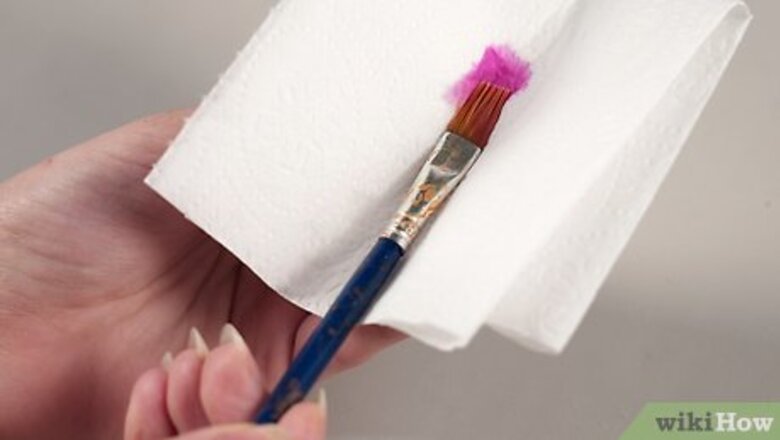
views
- Wipe off the paint on your brush with a paper towel. Then, pour turpentine, paint thinner, or an oil like linseed oil or safflower oil into a container.
- Dip your brush in the solvent and wipe it on a paper towel, repeating this several times. Then, lather the brush with dish soap and rinse it with warm water.
- For a non-toxic option, wet the brush and drag it across a bar of soap. Rinse and lather the brush until no more paint comes off of it.
Cleaning Oil Paint Brushes with Solvents
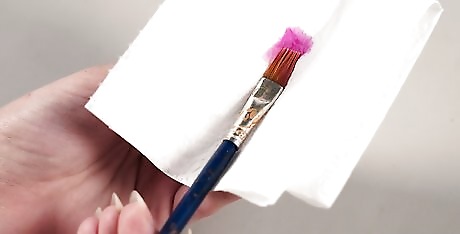
Wipe off the brush with a paper towel or piece of newspaper. Wrap the paper around the brush’s ferrule, or the metal piece that connects the bristles to the handle. Then, gently squeeze and pull the paper through the bristles. Simply repeat this a few times. As an extra step, brush the paintbrush back and forth across the paper to remove more paint.
Swish the brush in a jar of turpentine, paint thinner, or mineral spirits. Pour the solvent of your choice into a small container until it’s deep enough to cover the brush’s bristles. Then, dip the bristles into the solvent and gently brush the bottom to remove the paint. Note: Wear gloves and work in a well-ventilated area when cleaning your brushes. Solvents like turpentine can potentially irritate your skin and produce intense fumes. Mineral spirits like Gamsol typically release fewer odors. Do not crush the bristles against the bottom of the container. This can bend the bristles, damaging them or causing the brush to lose its shape. Gently push the brush on the side of the jar to help saturate the brush with the solvent.
Wipe the brush on a paper towel and dip it into a new jar of solvent. Tap the brush on the edge of the jar to remove excess solvent. Then, wrap a clean paper towel around the bristles and pull the brush through the towel. To ensure the brush is clean, pour more solvent into a new container and swish the brush inside. Then, wipe the brush off with another clean paper towel. Painting specialist Patrick Coye recommends swirling the brush in a third container of solvent. He says, “by the time [you’re] finished with the third [solvent container], the majority of the paint is completely out.” Each container of solvent should appear less clouded with paint than the one before it, with the third appearing relatively clear. It’s normal for your paintbrush to still appear stained with paint after cleaning it in the solvent.
Lather the brush with soap and rinse it with warm water. Add a dab of dish soap or a paintbrush cleaner like Pink Soap Brush Cleaner onto your hand. Then, dip the bristles into the soap and brush them back and forth across your palm to form a lather. Keep brushing until the soap turns the same color as your paint and then rinse the brush under warm water. Repeatedly lather the brush with soap and rinse it with water until the soap no longer changes color. Do not use hot water, as this can soften the glue holding the bristles together inside the ferrule and damage your brush. Alternatively, brush the bristles against a bar of soap or swirl them in The Masters Brush Cleaner. Washing your brushes with soap removes any excess paint and solvent residue from the bristles.
Cleaning Oil Paint Brushes with Natural Oils

Remove excess paint with a paper towel or piece of newspaper. Gather the paper around the base of the bristles and gently pull the paper through them. Repeat this a few times to get out as much paint as possible. Then, brush the paintbrush back and forth across the paper. Use soft, gentle motions when dragging your brush against the towel. Smashing your brush can damage the bristles or bend them out of shape.
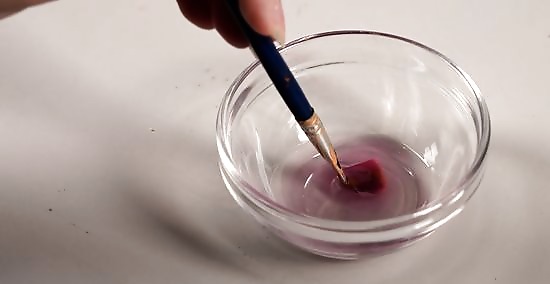
Dip the brush in a container of linseed, safflower, or walnut oil. Pour either oil into a small container until it’s deep enough to coat your brush’s bristles. Then, submerge your brush and gently brush and bounce it across the bottom of the container to loosen the paint. Other oils like olive, poppy, vegetable, mineral, and baby oil effectively clean your brush.
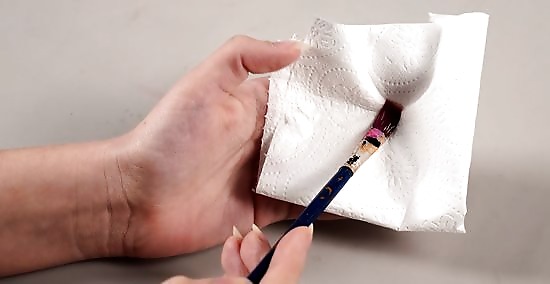
Wipe the brush with paper towels and dip it in oil until the brush is clean. Squeeze a clean paper towel over the bristles and brush the paintbrush back and forth over the towel to remove the paint. Then, swirl the brush in the container of oil again. Just keep wiping and dipping the brush until no more color is coming off of the brush.
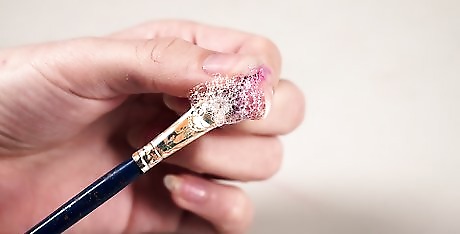
Clean the bristles with soap and rinse the brush with warm water. Use your fingers to massage dish soap or a cleaner like Pink Soap Brush Cleaner into the bristles of your brush until the soap forms a lather. Then, rinse off the soap with warm water. Just keep lathering the bristles and rinsing them with water until the soap and water no longer change color.
Cleaning Oil Paint Brushes with Soap
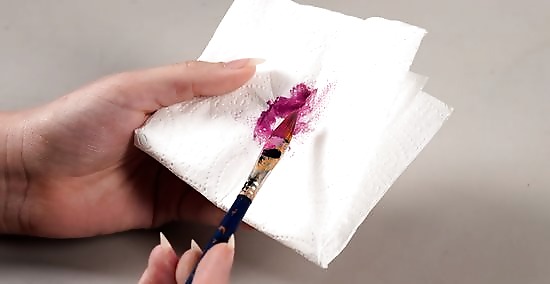
Wipe your brush with a paper towel or piece of newspaper. Wrap the base of the bristles with the paper towel, gently squeezing the bristles as you pull the towel over them. Repeat this a few times. Then, drag the brush back and forth across the towel to remove any excess paint.
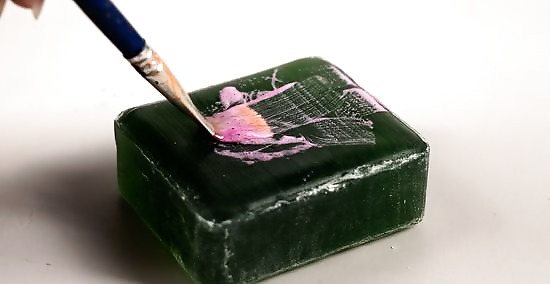
Lather your brush with bar soap, dish soap, or Murphy Oil Soap. Run your brush under warm water and drag it back and forth across a bar of hand soap, like Ivory Soap, until it starts to form suds. Or, pour a dollop of dish soap or Murphy Oil Soap into your hand and brush the bristles back and forth through it.
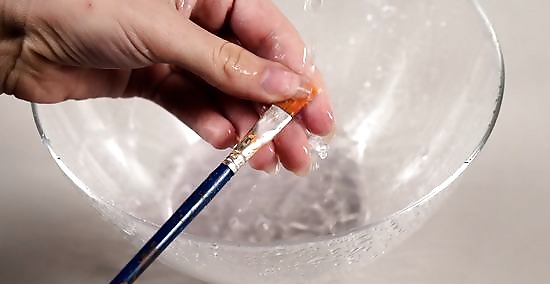
Rinse the brush with warm water and massage it with more soap. When the soap starts to change color on your brush, hold it under warm water to clean off the soap and paint residue. Then, lather the brush with more soap. Just keep rinsing and washing until both the soap and water stop changing color from the paint. Periodically wipe the brush across a clean paper towel to check if all of the paint is removed.
Cleaning Dried Oil Paint with Vinegar
Soak the brush’s bristles in a container of vinegar for 24 hours. If your brush is coated with hard, dried oil paint, simply fill a container with apple cider or white vinegar. Then, insert your brush and let the bristles soak for about 24 hours. The acids in vinegar help break down the oil paint and loosen it from your brush. If you don’t have vinegar, soaking your brush in mineral spirits, oil, or Murphy Oil Soap also lifts off dried oil paint.

Wipe the paint off the brush with a paper towel. Pinch the paper towel around the base of the brush’s bristles. Then, pull the brush through the towel and your fingers to remove the loosened paint. Repeat this a few times until you remove most of the paint.
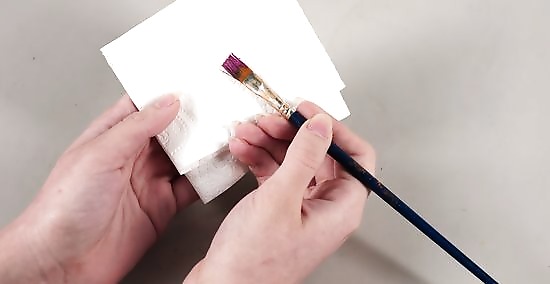
Clean the brush with solvent, oil, or soap. To get the rest of the dried paint out of the brush, clean it as normal using one of the methods described above. Dip your brush in the solvent or oil of your choice, wipe it on a clean towel, and then rinse it with soap and warm water. Or, lather your brush with bar soap or dish soap and rinse it with water. In general, letting oil paint dry on your brush affects the bristles' texture and shape, even if you’re able to remove all of the paint. Always wash your brushes as soon as you’re done using them to prevent the paint from drying and to keep them in good condition.
Drying and Storing Your Brushes
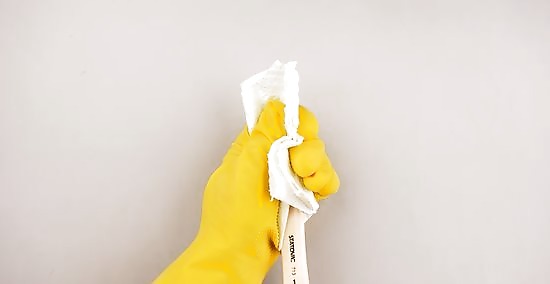
Squeeze and wipe the bristles across a paper towel. To remove excess water on your brush, wrap the ends of the bristles with a paper towel and pull the towel across the brush. Then, gently drag the bristles back and forth over the towel. If you still see paint coming off of your brush as you dry it, clean it again. It’s normal for the bristles to appear stained with paint, even after you clean them. As long as no more paint is coming out of the brush, it is clean.
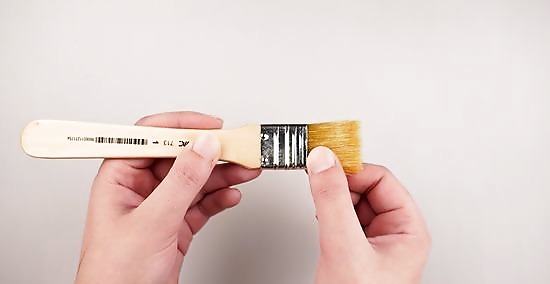
Reshape your brush’s bristles with your fingers. Grab the base of the bristles and use your fingers to gently press them together. Move up the brush, continuing to sculpt the bristles back into their original position. This helps prevent your brush from fraying and bending out of shape.

Rub conditioner into your brushes once per month. With regular use and cleaning, the bristles on your brush can feel stiff and brittle. To soften and restore them, just massage a dollop of hair conditioner into the bristles. Let the conditioner sit for 30 minutes to 1 hour and then rinse it out with water. Make sure to reshape the brush’s bristles after rinsing out the conditioner. Do not apply conditioner too often, as it can cause the bristles to grow misshapen. If you need your brushes to be dry and not feel oily or waxy, you may want to skip this step. Alternatively, condition your brush with mineral oil. Conditioning sable hair brushes is especially important, as it restores their natural oils.
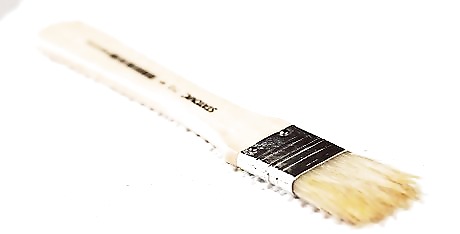
Dry your brushes by laying them down on their sides. Place a clean towel on a table or counter and place your brushes horizontally on top of it. If you’re drying flat or fan brushes, place the flat side down so it’s parallel to the floor. If the brush isn't huge or heavy, let it hang off of the edge of the table at the ferrule. Drying your brushes thoroughly helps prevent mildew from growing and keeps your brushes in good condition. If you're in a hurry for your brushes to dry, blot the bristles with a clean cloth. Or, aim a cool fan at the bristles. Do not dry your brushes upright. Water can seep into the ferrule and handle, damaging the brush.
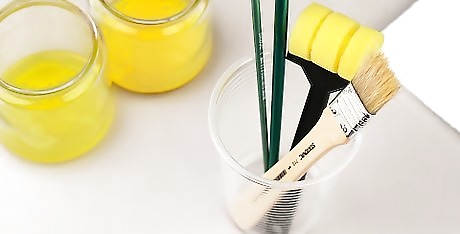
Store your brushes upright when they’re completely dry. Place the brushes vertically in a container, with the bristles on top, to preserve their shape. Be sure that you don’t overfill the container and can grab the brush you need without damaging the bristles of the other brushes. Keep your bristles out of direct light and store them in a well-ventilated room to help extend their lives. If you have too many brushes in 1 container, separate some into a new one. Some brushes, like hog and sable brushes, can attract moths. Store these brushes in a container with a lid.
Safely Disposing of Used Towels and Solvents
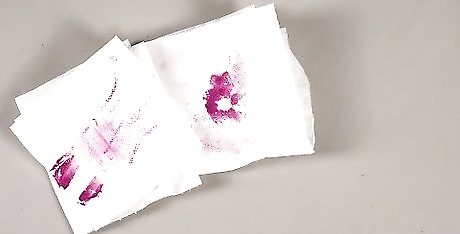
Let your used rags dry outside for 2 days before throwing them away. Paper towels and cloths soaked with oil-based paints and thinners can potentially spontaneously combust if they are left in a wet pile. To safely dispose of your used towels, separate them and lay them outside on the ground to dry for about 2 days. When they feel stiff, they are safe to throw away in the trash.
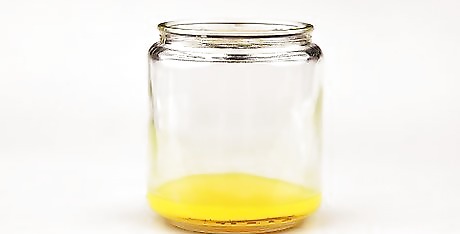
Save and reuse your used solvent or oil. The best part about using solvent or oil to clean your oil paint brushes is that the cleaning agent and paint separate. Just let the paint settle on the bottom of your used containers overnight and then pour the clean layers of solvent or oil into a new container. Seal the containers and label them as “Clean” and “Used Paint.” Store the used solvent and paint away from heat sources, children, and pets. Oil paint and thinners are flammable and can be toxic. When your solvent or oil gets too dirty to use, pour it into the container with the used paint.
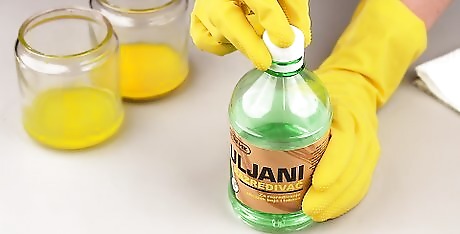
Dispose of materials according to your hazardous waste collection program. Oil paint, oil, and solvents are considered hazardous waste that isn’t safe to pour down the sink. Most areas have a hazardous waste collection program, so contact your local government to find where you can drop off your used materials. Some areas also offer curbside pickup. Store your used materials in sealed, leakproof containers. If possible, keep them in the container they came in.













Comments
0 comment